Static routing will be used in a network between a corporate head office, with many connected networks, and a branch office, with one connection to the head office. Which of the following best describes the likely configuration?
Which of the following statements regarding the election of the designated router (DR) by OSPF routers are true? (Choose two)
What causes an adjacency to change from down to two ways?
Click the exhibit button.
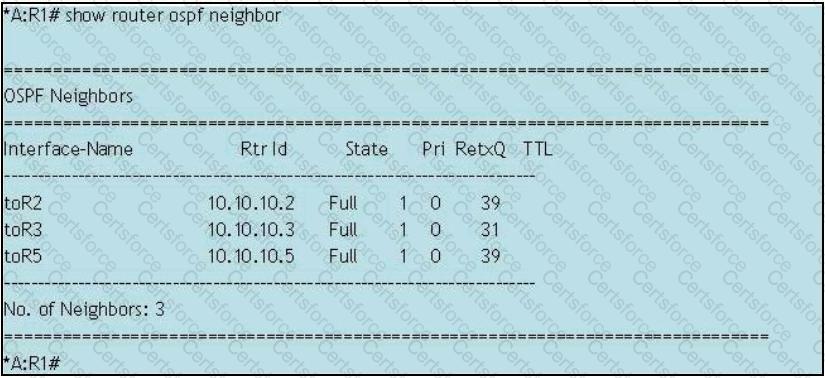
The following command sequence is executed on router R2:
A: R2# configure router ospf router-id 10.10.10.99
A: R2# configure router router-id 10.10.10.66
On router R1, what router ID appears for router R2 directly after these commands are executed?
What is the value of the protocol discriminator used to denote IS-IS protocol information?
Click the exhibit button.
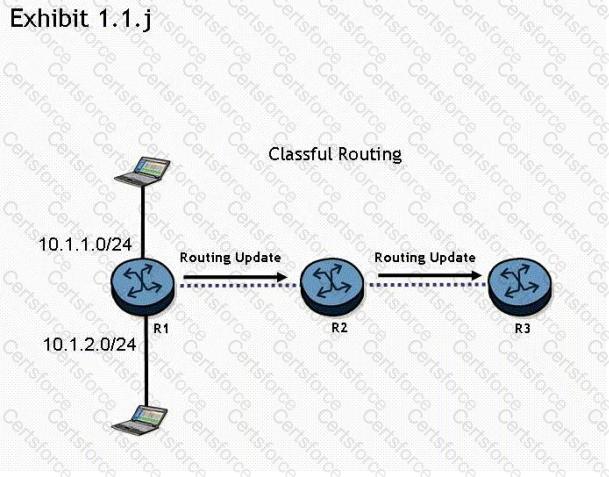
Routers R1 „ R2, and R3 are running a classful routing protocol between them. Assuming that router R1 advertises all directly connected networks, how will these networks be represented in router R3's routing table?
What are the ways the RID can be created on an Alcatel-Lucent 7750 SR router? (Choose three)
Which of the following statements apply to link state protocol behavior? Choose three answers.
Click the exhibit button.
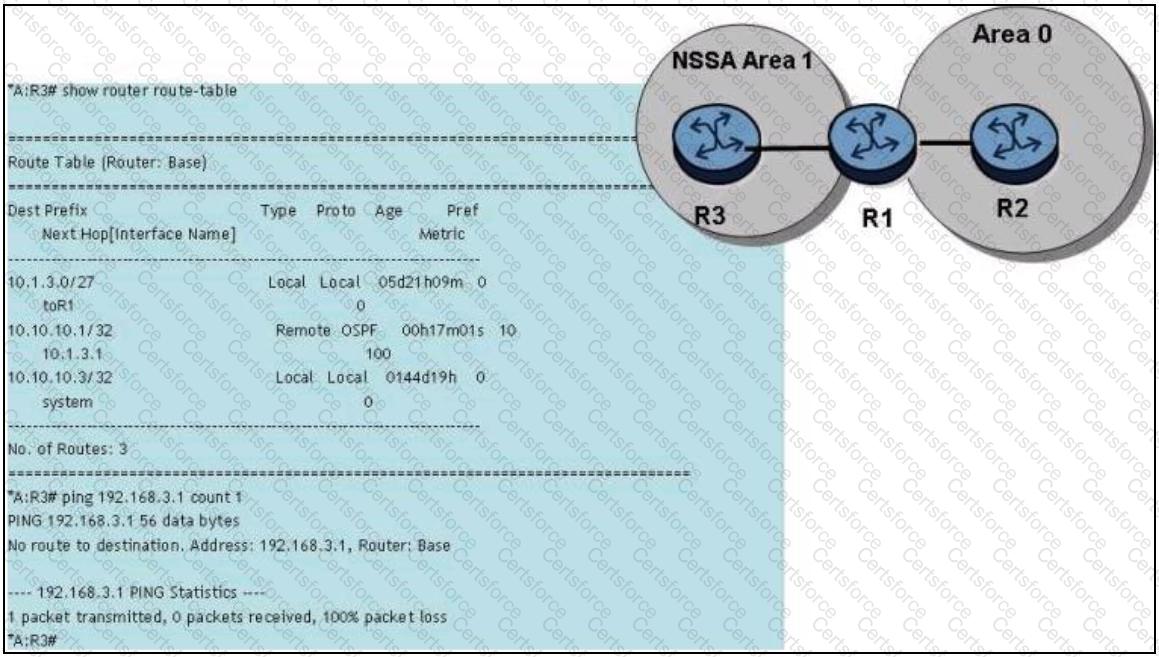
192.168.3.1 is a loopback interface on router R2 and is distributed to OSPF area 0, but the ping fails from router R3. Which of the following is a possible solution to the problem?
Click the exhibit button.
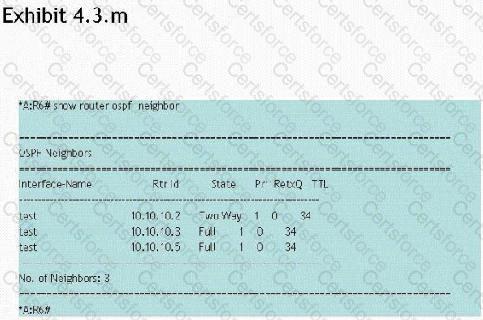
What can you deduce from the show command on router R6?
Click the exhibit button.
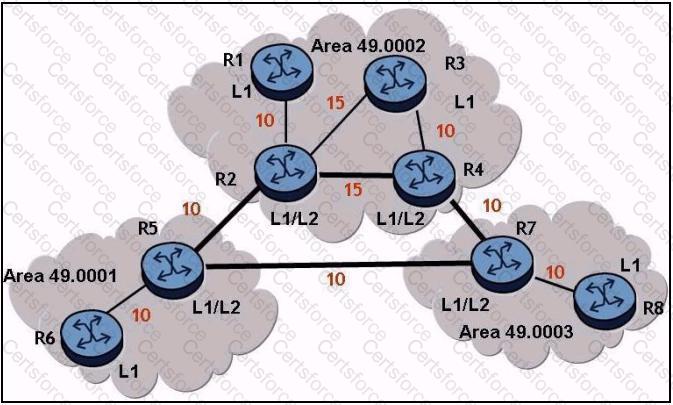
Given the diagram below, what path will traffic follow from router R6 to router R3, and from router R3 to router R6, if IS-IS is the routing protocol? The numbers beside the links are the metrics for that link.
An Alcatel-Lucent 7750 SR receives a route via an IS-IS LSP with internal reach ability, and receives the same route via an OSPF type 5 LSA. If al protocol preferences are default, which route will be installed in the route table?
What is the source IP address in an OSPF update?
Which of the following are types of routers in an IS-IS topology? Choose three answers
What are the similarities between OSPF and IS-IS? Choose two.
Identify two attributes of Distance Vector Protocols: (Choose two)
What value should the AFI be set to for locally administered addressing?
What types of routers can an IS-IS L1 router form adjacencies with? Pick all that apply.
Which of the following best describes the actions after an IS-IS router receives on a broadcast interface, a newer LSP than the one in its database?
What value should the AFI be set to for locally administered addressing?